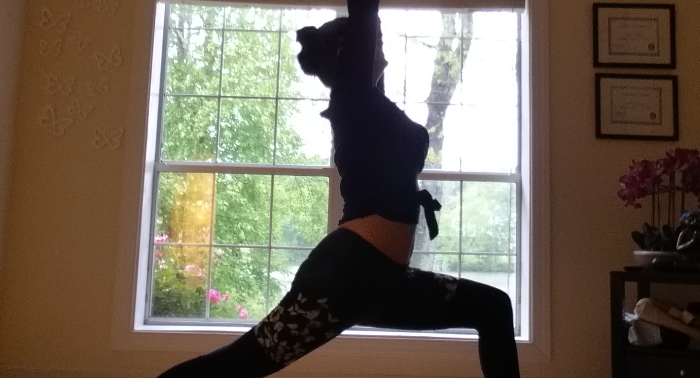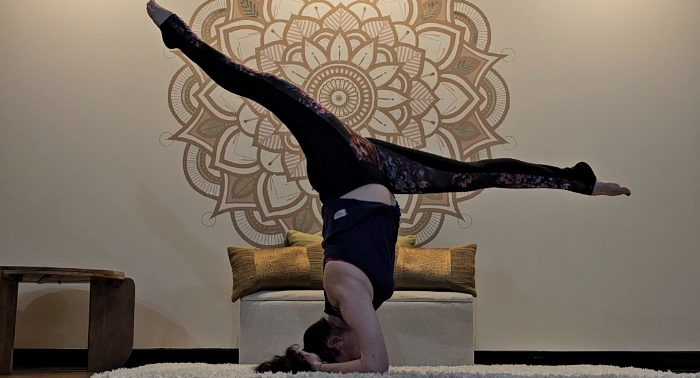Exploring Ashtanga Yoga: The Power of Tristana- Breath, Bandha, and Drishti

Ashtanga Yoga, a dynamic and structured practice, stands out for its disciplined approach and transformative benefits. As a yoga teacher, I have witnessed firsthand the profound impact this method can have on practitioners, not just in terms of physical mobility, but also in cultivating a disciplined mind. At the core of Ashtanga Yoga is the Tristana method, a triad that integrates breath (pranayama), internal locks (bandhas), and gaze (drishti), fostering a holistic experience that transcends mere physical exercise.
The Tristana method is a foundational aspect of Ashtanga Yoga, anchoring the practice in a harmonious blend of breath, bandha, and drishti. Each component plays a vital role in ensuring that the practice is both safe and effective, providing numerous benefits that extend beyond the yoga mat.
-
Breath (Pranayama): The breath in Ashtanga Yoga is characterized by Ujjayi breathing, a deep, rhythmic inhalation and exhalation through the nose, producing an audible sound. This breath control helps to create internal heat, which purifies the body by expelling toxins. Moreover, the focus on breath synchronizes movement, promoting a meditative flow that calms the mind and enhances concentration.
-
Bandha (Internal Locks): Bandhas are internal energy locks that play a crucial role in stabilizing and protecting the body during practice. The three primary bandhas are Mula Bandha (root lock), Uddiyana Bandha (abdominal lock), and Jalandhara Bandha (throat lock). Engaging these bandhas helps to maintain the integrity of the postures, supports spinal alignment, and conserves prana (life force energy), facilitating deeper states of meditation and inner awareness.
-
Drishti (Gaze): Drishti refers to the specific focal points used during postures to direct the gaze. There are nine traditional drishtis in Ashtanga Yoga, such as the tip of the nose, the thumbs, or the navel. Utilizing drishti aids in focusing the mind, reducing distractions, and cultivating a sense of inner stillness. This inward focus is instrumental in developing mental clarity and heightened awareness.
While the physical benefits of Ashtanga Yoga are numerous, including improved flexibility, strength, and balance, the most profound transformations often occur at the level of the mind and spirit. Mobility in the body is not just about achieving advanced postures; it is about creating space within the body and mind. This enhanced mobility translates into greater freedom of movement, reduced pain, and an overall sense of ease and lightness.
Discipline, fostered through regular practice, is another cornerstone of Ashtanga Yoga. The structured sequence of postures and the consistent application of the Tristana method require dedication and perseverance. This discipline extends beyond the physical practice, encouraging practitioners to develop healthy habits, make mindful choices, and cultivate a balanced lifestyle.
Benefits of Ashtanga Yoga
-
Physical Benefits:
- Enhanced flexibility and strength
- Improved posture and alignment
- Increased stamina and energy levels
- Detoxification through sweat and breath control
-
Mental Benefits:
- Greater focus and concentration
- Stress reduction and emotional balance
- Development of mental resilience and discipline
- Enhanced mindfulness and self-awareness
-
Spiritual Benefits:
- Deeper connection to inner self
- Cultivation of inner peace and stillness
- Greater sense of purpose and direction
- Integration of body, mind, and spirit
Ashtanga Yoga, through the disciplined application of the Tristana method, offers a comprehensive approach to achieving not only physical mobility but also mental and spiritual balance. As a yoga teacher, my goal is to guide practitioners in harnessing the power of breath, bandha, and drishti, fostering a practice that is both transformative and sustaining. By embracing the principles of Ashtanga Yoga, individuals can cultivate a disciplined mind, a healthy body, and a balanced state of being, ultimately leading to a more harmonious and fulfilling life.




